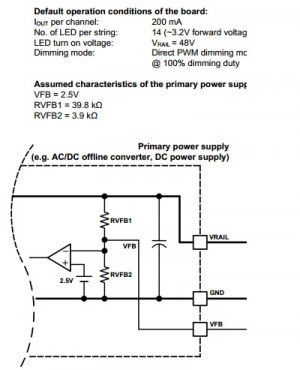I'm wondering if anyone has experience with this chip, it's a 48L WQFN package, which is my biggest concern. It's a 6 channel driver with 4 PWM / analog / serial dimming inputs.It even has built in thermal foldback dimming.
Anyways, I am in a situation where I need to make drivers for 5 or 6 "dream chip" type multichannel emitters. I tried LDD drivers on the last couple that I made, and out of the 12 LDDs I was able to order, 3 were bad! Plus, they don't support analog dimming, and they are kind of pricey when you need 40 or 50.
Anyways, I am in a situation where I need to make drivers for 5 or 6 "dream chip" type multichannel emitters. I tried LDD drivers on the last couple that I made, and out of the 12 LDDs I was able to order, 3 were bad! Plus, they don't support analog dimming, and they are kind of pricey when you need 40 or 50.

